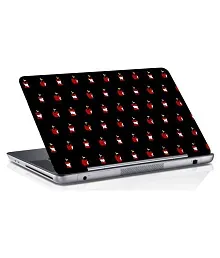what is the ideal z-height if a laptops needs to be considered as ultra slim
A laptop with an "ideal" z-height is one with a thickness of less than 0.6 inches and a maximum height of 26 inches.
A few things to keep in mind before you get too excited about your new ultra slim laptop:
-The ideal z-height only refers to dimensions, not weight, so it's important that the machine really is as slim as it claims to be!
-It's amazing how much thinner laptops have gone in the last few years, but without compromising on quality. Most laptops are thicker than they need to be.
-There's no right or wrong answer to the ideal z-height, it's just a number that is based on the target market for laptops.
-The ideal z-height does not apply to smartphones. The target audience for smartphones are people who want maximum portability without compromising on features, not those who want to carry around an ultra slim laptop in their pocket. For more information about what the target audience needs in a laptop, read this
article:
-If you are looking for a new laptop and have found one that is ideal (based on your personal preference), then it may be worth putting up with a few issues.
A little extra info about the term "ideal z-height" and where it came from:
Image source: https://paytmmall.com/
The term was coined at the end of 2009 by Len Terry and Daniel Tal, co-founders of Anandtech.com, a popular review website for consumer electronics. They were trying to categorize the different types of laptops on the market, and in particular wanted to distinguish between slimbooks and ultrabooks, which they saw as very different. Even though z-height is not a perfect measurement of the quality of a laptop, it is a very good indicator.
Len Terry explained that the debate about z-height had been going on in the Anandtech forum for some time, and it got to the point where he just wanted to give something simple for readers to use to categorize laptops. By using z-height as their main comparative factor, they have been able to sift out some really horrible laptops.
Daniel Tal also explained why they chose 26 inches as the maximum height:
"The general idea behind that number was just how short can you go while still giving enough room for an average person's hands. At 26", you can fit a normal sized palm in there."
Image source: https://www.snapdeal.com/
At the time of writing this article, these are the current laptops that are considered "ultra-slim" by Anandtech and include the Acer Aspire S3, the Lenovo IdeaPad U410 and Dell Inspiron M5030. Notice how thin all of these laptop are. You can see for yourself how much thinner they are in comparison to other laptops at http://www.laptopmag.com/reviews/best-laptops
Although slimbooks have been around for a while (at least since 2009), there were still some awful ones produced up until the end of 2011. Look no further than the ASUS Zenbook Ux Series Ultrabook. It was an attempt by ASUS to produce a thin and light laptop that offered the best of both ultrabooks and laptops with the help of a hybrid design. This meant the screen was hinged at the base, so it could flip backwards for more comfortable viewing, but the laptop still kept its full-size keyboard, which was very convenient but also meant it was thicker than ideal despite being relatively thin.
Len Terry put up a great explanation of what goes into Anandtech's categorization of laptops:
"I'd say it's about where you start getting into more than just raw thickness numbers.


Comments
Post a Comment